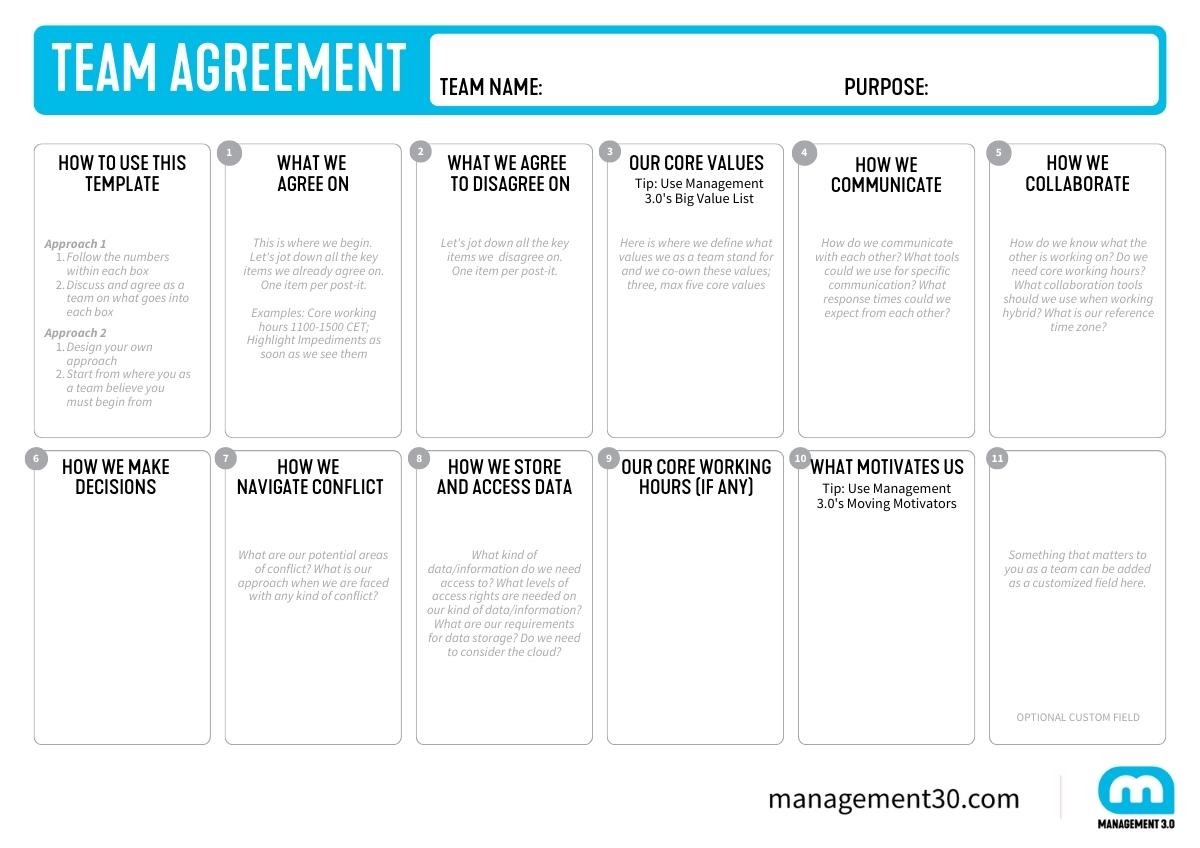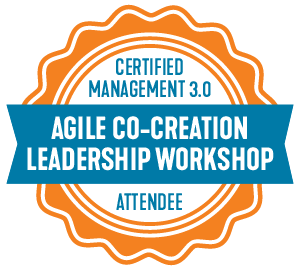How do you collaborate as a team? How do you communicate, share information, resolve conflicts or make decisions? Clarify key issues in a structured way – in your team agreement.
By creating a team agreement, teams can establish a shared understanding of how they will work together, which can help to prevent misunderstandings, reduce conflict, and increase overall effectiveness. The agreement can also serve as a tool for onboarding new team members and as a reference point for resolving any issues that may arise.
What is a Team Agreement?
A team agreement, also known as a team charter or team contract, is a document that outlines the guidelines and expectations for how a team will work together. It is a collaborative agreement created by the team members themselves, and it serves as a reference point to help guide the team’s actions and decisions.

The Team Agreement Canvas
To give you a head start in creating your own team agreement, we provide you with our Management 3.0 Team Agreement Canvas. It contains the following key components along with two approaches on how to co-create the canvas with your team.
- What we agree on
Jot down all the key items you, as a team, already agree on. Examples: core working hours 11.00-15.00 CET; highlight impediments as soon as we see them. - What we agree to disagree on
Jot down all the key items you as a team agree to disagree on. - Our core values
Define what values you as a team stand for using three to max. five core values. You can use our Big Value’s List to find out your team values. - How we communicate
How do you communicate with each other? What tools could you use for specific communication? What response times could you expect from one another? - How we collaborate
How do you know what your colleagues are working on? What collaboration tools should you use when working hybrid? What is your reference time zone? - How we make decisions
Which decision model do you take when? - How we navigate conflict
What are your potential areas of conflict? What is your approach when you are faced with any kind of conflict? - How we store and access data
What kind of data/information do you need access to? What levels of access rights are needed for your kind of data/information? What are your requirements for data storage? Do you need to consider storage in the cloud? - Our core working hours (if any)
- What motivates us
You can use our Moving Motivators to find out what motivates you as a team.
How to use the Team Agreement Canvas
Within the template itself you can find two approaches on how to use it:
Approach I
Follow the numbers within each box
Discuss and agree as a team on what goes into each box
Approach II
Design your own approach
Start from where you as a team believe you must begin from
Sarika Kharbanda, seasoned Management 3.0 Facilitator, strongly encourages others to co-create the Team Agreement with the whole team. Here is how she suggests facilitating this: How can you create your Team Agreement? A Team Agreement Co-Creation Workshop
The Team Agreement works quite well with our Personal Collab Cards: First ask your team to fill in their Personal Collab Cards and the figure together how the individual needs could be reflected in the Team Agreement.
Learn more about using the Team Agreement Canvas
During the Agile Co-Creation Leadership Workshop, the Team Agreement Canvas is introduced as part of the Remote & Hybrid Collaboration Module. There you can learn how to fully leverage its potential in combination with our Personal Collab Cards.


